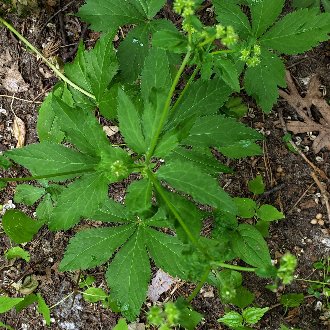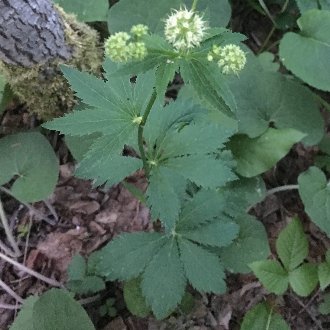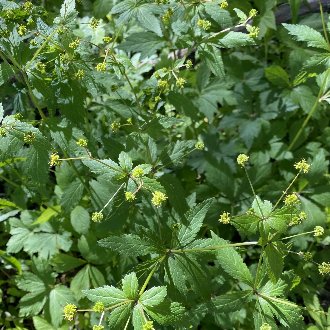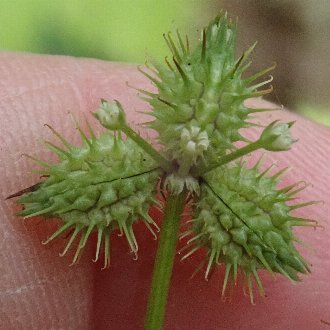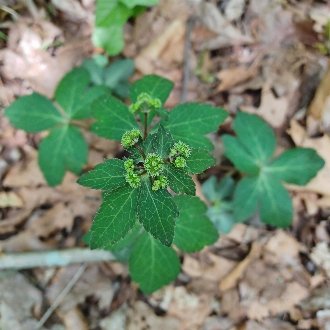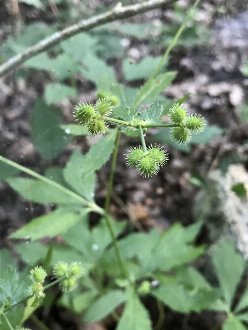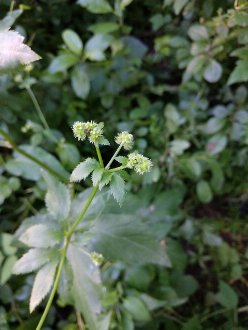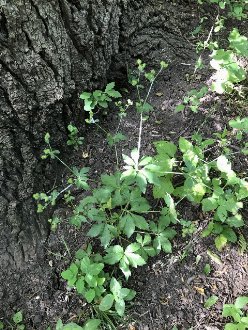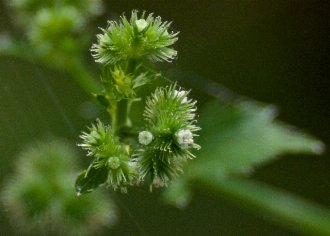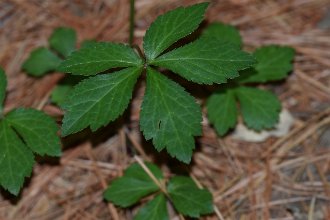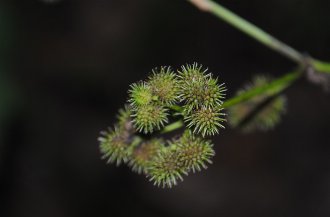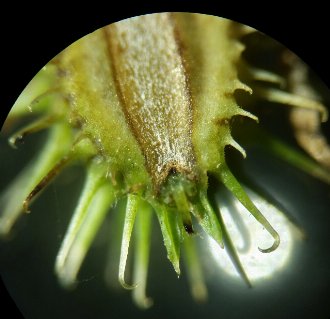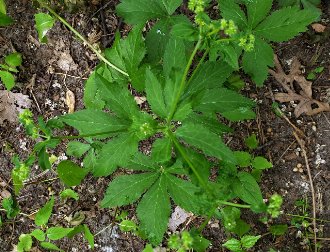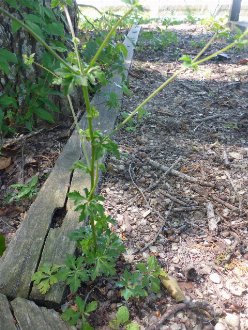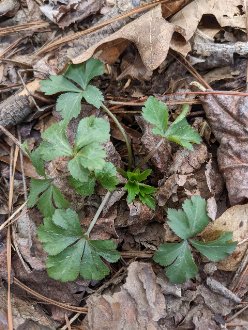Canadian Blacksnakeroot (Sanicula canadensis L.)
Also known as Canadian black snakeroot, Canada sanicle, Canadian sanicle.
↑Summary
A biennial of rich woodlands, native to eastern North America.
↑Range - Expand
| Legend | Color |
| Native | |
| Native or Not Present |
This tentative map is based on our own research. It may have limited data on Canada and/or Mexico, and there is some subjectivity in our assignment of plants as introduced vs. expanded. Read more in this blog post.
Although this plant occurs somewhere in each of these regions, it may only occur in a small part of some or all of them.
↑Description & Identification
The leaf shape of this species is highly variable; basal leaves tend to have 3 leaflets, with the two side leaflets deeply subdivided, giving a 5-leaflet-like appearance. However, sometimes the leaves are fully subdivided into 5 leaflets.
Identification of species within this genus is difficult and often requires close examination of the inflorescence and/or fruit.
↑Similar Plants
↑Habitat
Found mostly in deciduous woodlands, also on north-facing bluffs, and to some degree in mixed coniferous woodlands. Generally limited to sites with loamy soils rich in organic matter and nutrients, but more tolerant of sandy soils and soil acidity than other Sanicula sp., which explains it being the most likely of these to venture into woodlands with some conifers; can tolerate a range of moisture conditions from moist to slightly dry, but absent from very dry or poorly-drained sites. Able to survive under a closed forest canopy but usually absent from the sites with the densest shade.
Found in both natural woodlands and anthropogenic wooded habitats, including shaded suburban gardens and fence rows with sufficiently large trees to create significant shade. Tolerates a wide range of levels of disturbance, and can be found in highly disturbed woodlands as well as intact natural areas.
Throughout much of its range, this is the most common Sanicula species. In the northeast of its range, it becomes increasingly rare, and more restricted to sites with sandy soils but otherwise similar to its preferred habitats in the rest of its range.
↑Life Cycle
This species is a biennial or occasionally a short-lived perennial.
Seeds usually germinate between February and May. On disturbed sites with some direct sunlight, this plant can sometimes compete favorably against other ground-level vegetation, but it is not as effectively competitive as S. odorata on the sunnier, more disturbed sites. The large seeds can sometimes give this plant an edge against other species with smaller seeds that germinate in the same environment.
First-year plants establish a basal rosette and fibrous root system. First-year plants do not bloom. In the warmer parts of its range, especially in mild winters, basal leaves persist through winter.
In the second year, plants begin growing upright in mid-spring, and flower. Plants usually die after the seed matures.
Seed dispersal is slow, often taking a year or longer, with many mature seeds remaining on dead, upright stems. Seeds are primarily distributed by attaching to animal fur or clothing, with many seeds also falling close to the parent plant. This dispersal system leads plants to establish colonies with abundant seed in suitable locations, but also to have small portions of seed travel, usually in small groups, to new locations over considerable distances.
Germination timing depends on time of seedfall; seeds that fall earlier are more likely to germinate in the first spring, whereas seeds that fall later in the year are more likely to germinate in the second spring or later. Some seeds take even longer to germinate, and may remain viable for several years, germinating in the 6th spring following maturity.
↑Faunal Associations
This species is mostly ignored by mammalian herbivores, both wild ones and livestock. The flowers do not attract large numbers of pollinators, but are occasionally visited by Halictid bees of the Lasioglossum genus, masked bees (Hylaeus sp.), and hoverflies (Syrphidae)
The aphid Aphis clydesmithi eats the plant sap from the stem and root collar, and another Aphis saniculae, which prefers this species, eats the sap from underneath the leaves.
↑Uses
Historically, this plant had medicinal uses, but nowadays it is not usually used for anything.
It is rarely used as a groundcover, but is not ideal for this purpose because its biennial nature makes it somewhat unpredictable and it does not always form a dense cover. Its unpredictable nature, and its seeds which stick to clothing or animal fur, limit its use as a garden plant.
It can be used in ecological restoration projects, in fragmented and degraded woodlands, as it is easy to seed into an area and thrives in these areas, after which it will readily spread on its own. However, it is a common plant in much of its range and is often already found in the degraded woodlands that one might consider seeding it into.
↑Related Plants
Four other Sanicula species overlap with this one in range; we have not been able to locate research on which are closest related. Sanicula, however, belongs to a tribe, Saniculoideae, which is thought to originate in southern Africa, and is closely related to a number of genera endemic to Africa and not found in North America. Of these, only one, Eryngium, occurs in North America, all native; there are several Eryngium species that overlap with this species in range.
The broader Apiaceae, or carrot, family has numerous plants, both native and introduced, overlapping with this species in range.
↑Links & External Resources
• Sanicula canadensis (Canadian Black Snakeroot) | Illinois Wildflowers (About This Site)
• Sanicula canadensis (Canadian Blacksnakeroot) | USDA PLANTS Database (About This Site)
• Sanicula canadensis | Go Botany (About This Site)
• Sanicula canadensis | Biota of North America Project (BONAP) (About This Site)
• Sanicula canadensis | NatureServe Explorer (About This Site)
• Sanicula canadensis | Missouri Plants (About This Site)
• Canadian Blacksnakeroot | Maryland Biodiversity Project (About This Site)
• Sanicula canadensis (Canadian Black Snakeroot) | Minnesota Wildflowers (About This Site)
• Sanicula canadensis L. var. floridana (Bicknell) H. Wolff (Florida Snakeroot) | Digital Atlas of the Virginia Flora (About This Site)
• Sanicula canadensis L. var. canadensis (Black Snakeroot) | Digital Atlas of the Virginia Flora (About This Site)



